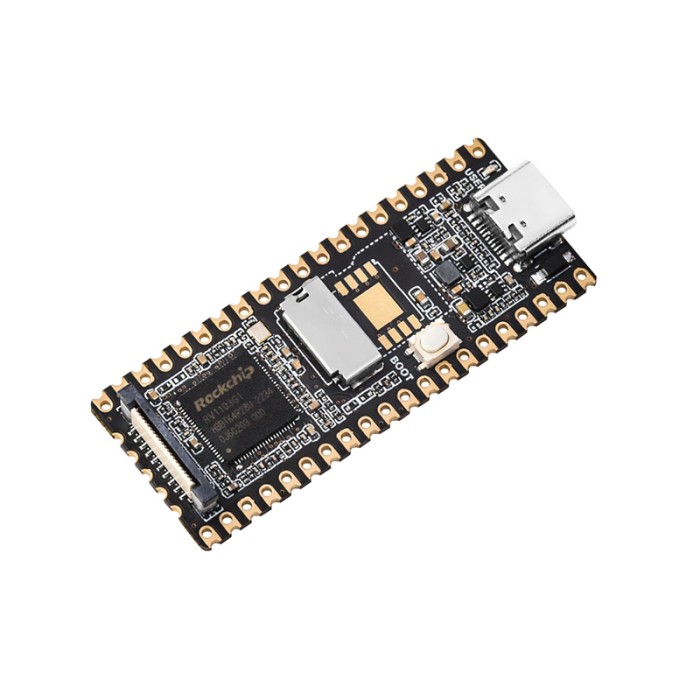LuckFox Pico RV1103 Linux Micro Development Board
Volume discounts:
- +25 4 % $16.1100
- +50 6 % $15.7800
- +100 8 % $15.4600
- +300 10 % $15.1400
- +500 12 % $14.8200
 Particle Photon Wi-Fi Module
Previous
Particle Photon Wi-Fi Module
Previous

The LuckFox Pico RV1103 is a Linux-based micro development board featuring a powerful Cortex-A7 processor paired with a RISC-V core, designed for advanced AI and IoT applications. It integrates a 0.5 TOPS NPU, a high-performance ISP supporting 4MP input, and a versatile set of interfaces, including MIPI CSI for camera input and 24 GPIO pins. With 64MB of DDR2 memory, USB 2.0, and 10/100M Ethernet, this compact board is perfect for developing high-efficiency AI projects, especially those requiring quick image processing and intelligent encoding.
Specifications of LuckFox Pico RV1103 Linux Micro Development Board
-
Processor: Cortex-A7 @ 1.2GHz + RISC-V
-
NPU: 0.5 TOPS, supports int4, int8, and int16
-
ISP: Supports 4MP input @ 30fps (Max)
-
Memory: 64MB DDR2
-
USB: USB 2.0 Host/Device
-
Camera Interface: MIPI CSI 2-lane
-
GPIO: 24 × GPIO pins
-
Ethernet Port: 10/100M Ethernet controller with embedded PHY
-
Default Storage: TF card (Not included)
-
Dimensions: ---
How to use of LuckFox Pico RV1103 Linux Micro Development Board
-
Power Up: Connect the board to a power source using the USB 2.0 port or through the appropriate GPIO pins.
-
Storage Setup: Insert a TF card with your Linux image to boot the system.
-
Peripheral Connection: Attach cameras through the MIPI CSI interface, and connect other devices via GPIO, Ethernet, or USB ports.
-
Development: Use standard Linux tools and libraries to start developing AI applications, leveraging the NPU for accelerated processing.
-
Networking: Use the Ethernet port for network communication or IoT applications.





Please complete your information below to login.
Sign In
Create New Account